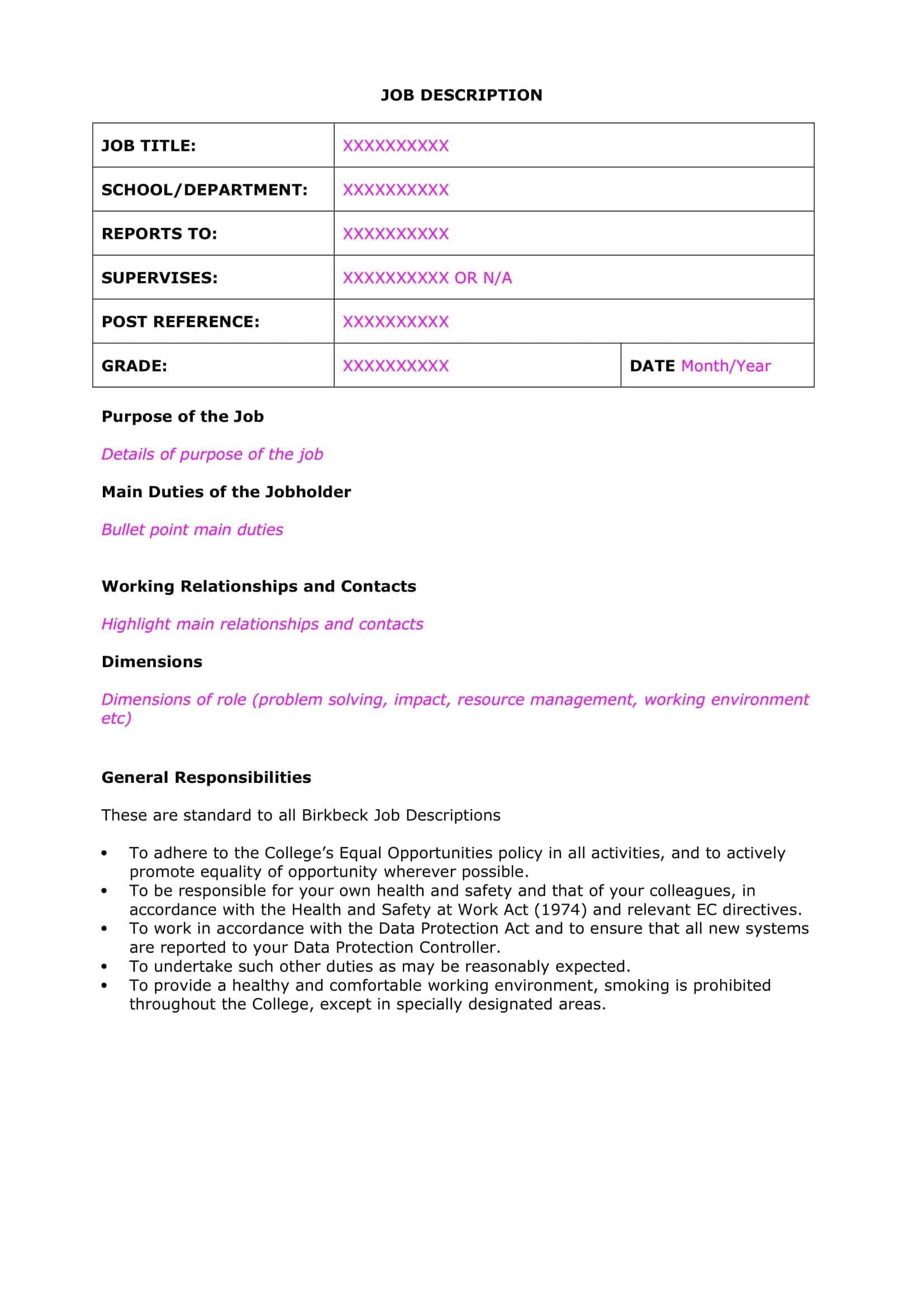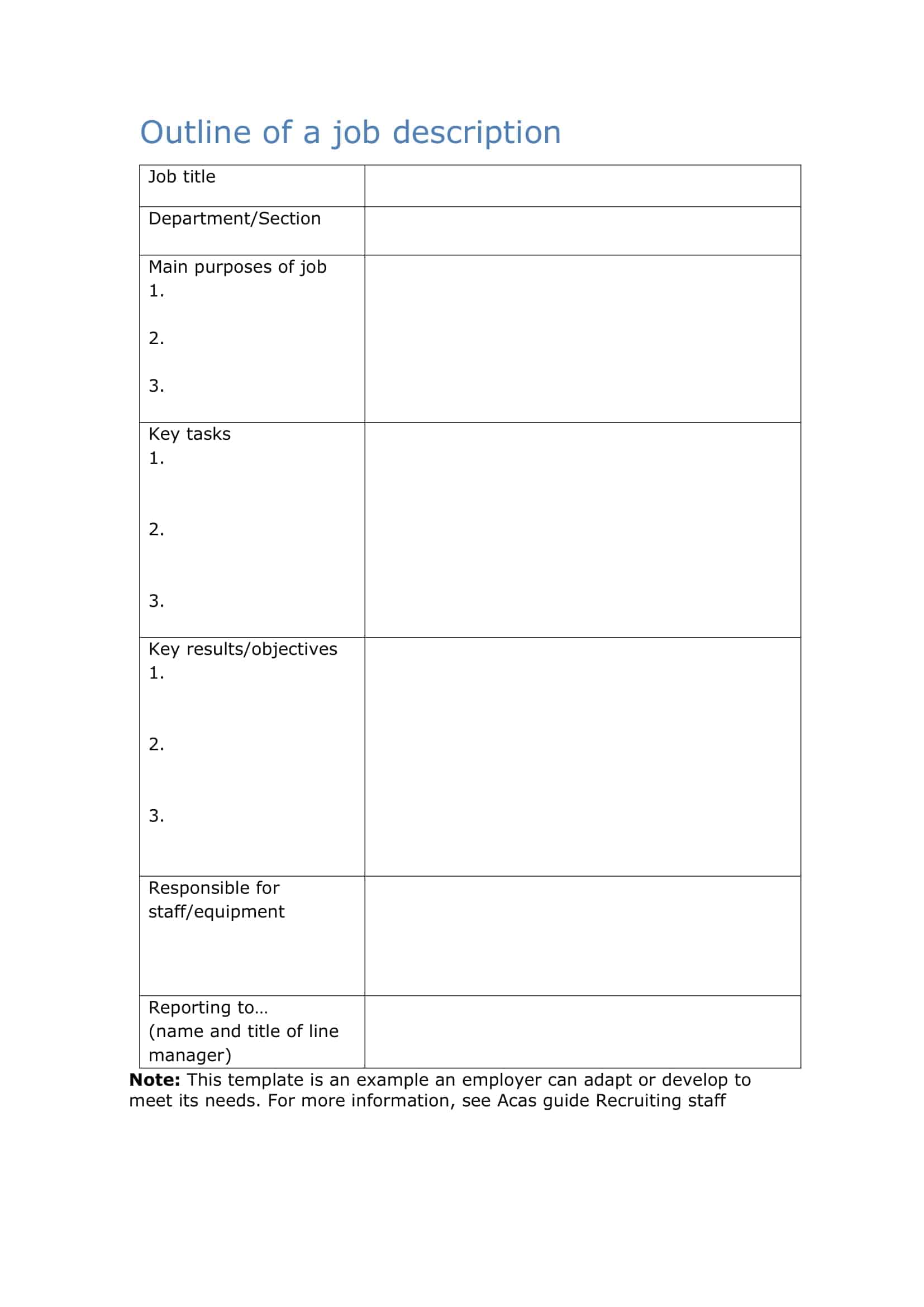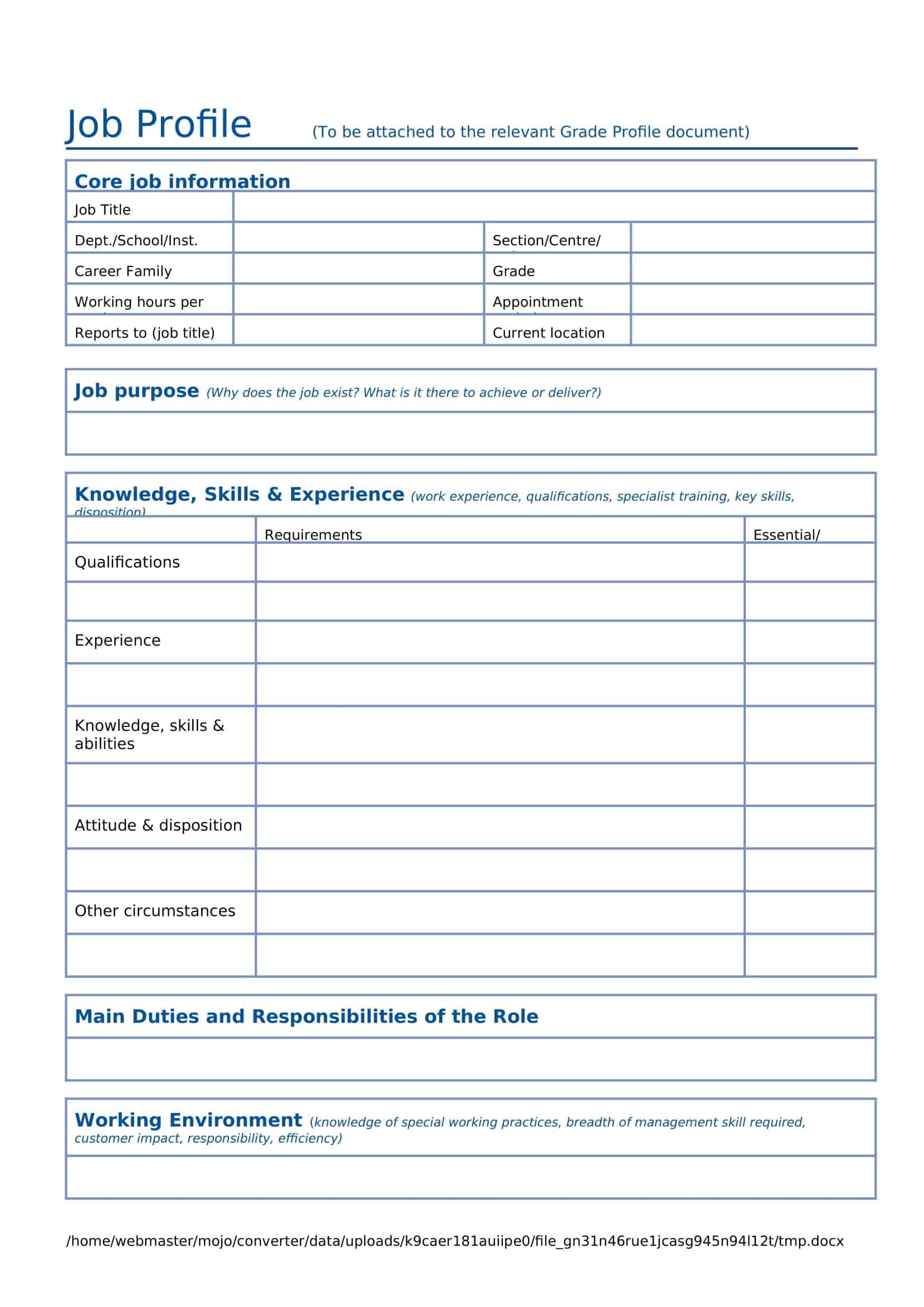A job description is a vital tool for both job seekers and employers. It provides detailed information about the responsibilities, duties, and requirements of a specific role, helping job applicants determine if they are qualified for the position and allowing employers to attract the most qualified candidates.
Crafting a comprehensive and accurate job description can be time-consuming, but using a Job Description Template can streamline the process and ensure that all necessary information is included. In this article, we will discuss the importance of job descriptions, the benefits of using a template, and answer some frequently asked questions about this crucial hiring document.
Table of Contents
Job Description Templates
Hiring the right candidate starts with a comprehensive and well-crafted job description. Our job description templates are designed to help you outline the responsibilities, qualifications, and expectations for various positions within your organization. Whether you’re hiring for an executive role, administrative position, or technical job, our templates provide a solid foundation for creating clear and concise job descriptions.
Customize the templates to match your company’s needs, including specific job duties, required skills, and desired qualifications. Clearly communicate the responsibilities and expectations to attract qualified candidates and streamline the hiring process. Download our free and printable job description templates to ensure accurate and effective job postings that attract the right talent.
The Importance of Job Descriptions

Job descriptions are important for a variety of reasons. Here are a few key points about the importance of job descriptions:
Clarity
A job description provides a clear and detailed overview of the responsibilities, duties, and requirements of a specific role. This helps job seekers understand exactly what the job entails, allowing them to determine if they are qualified and interested in applying.
Hiring
Job descriptions are a key tool for attracting and hiring the most qualified candidates. They provide potential applicants with important information about the job, which can help them decide if it’s a good fit for their skills and experience.
Legal
Job descriptions can also serve a legal purpose, as they can help protect employers from discrimination lawsuits by clearly outlining the requirements of the job and the qualifications needed to perform it.
Performance evaluation
Job descriptions can be used as a reference when evaluating an employee’s performance, as they outline the specific duties and responsibilities of the role.
Goal setting
Job descriptions can help employees understand their goals and objectives within the company, and can be used as a reference for setting performance goals.
Communication
Job descriptions can help facilitate communication between managers and employees by clearly outlining the expectations for the role.
Training
A job description can be used as a guide for training new employees, as it outlines the specific skills and knowledge required for the role.
Team building
A clear and comprehensive job description can help build a cohesive team by ensuring that all team members understand their roles and responsibilities within the organization.
Career development
Job descriptions can be used as a reference for employees looking to advance their careers within the company, as they outline the specific skills and experience needed for different roles.
Employee engagement
When employees understand their roles and responsibilities, they are more likely to be engaged and motivated in their work. Job descriptions can help foster employee engagement by providing a clear understanding of the expectations for the role.
How to Create a Job Description
Creating a job description is an important step in the hiring process, as it helps attract and select the most qualified candidates for the position. Here is a step-by-step guide for creating a job description:
Step 1: Determine the job’s purpose and responsibilities
The first step in creating a job description is to determine the purpose and responsibilities of the role. Consider the overall goals of the organization and how this specific role fits into those goals. Consider the specific tasks that the employee in this role will be responsible for, as well as the knowledge, skills, and abilities required to perform those tasks. It can be helpful to create a list of the main responsibilities and requirements of the job.
Step 2: Determine the job’s title and level
Next, determine the appropriate title and level for the job. The job title should accurately reflect the responsibilities and requirements of the role, and should be consistent with industry standards. The level of the job should reflect the level of experience and responsibility required for the role.
Step 3: Determine the job’s location and work schedule
Consider the location and work schedule for the job. Will the employee be working on-site or remotely? Will the employee be working full-time or part-time? Will the employee be required to work evenings or weekends? Make sure to include this information in the job description.
Step 4: Determine the job’s compensation and benefits
Decide on the compensation and benefits for the job. This should include information about the salary or hourly wage, as well as any additional benefits such as healthcare, retirement plans, or paid time off.
Step 5: Determine the job’s qualifications and experience
Outline the qualifications and experience required for the job. This should include any education or training requirements, as well as any relevant work experience. Consider both the minimum requirements for the job and any preferred qualifications that would make a candidate a stronger fit for the role.
Step 6: Write the job description
Now that you have all of the information about the job, it’s time to write the job description. Start by introducing the organization and providing some background information. Next, outline the responsibilities and requirements of the job, including any specific tasks, skills, and experience required. Be sure to include information about the location, work schedule, compensation, and benefits of the job. Finally, provide any additional information about the application process and how to apply for the position.
Step 7: Review and revise the job description
Once you have written the job description, it’s important to review and revise it to ensure that it is accurate, clear, and comprehensive. Consider asking a colleague or manager to review the job description to get a fresh perspective. Make any necessary revisions to ensure that the job description accurately reflects the role and the requirements for the position.
Step 8: Post the job description
Now that you have a completed job description, it’s time to post the job and start the hiring process. There are several options for posting job descriptions, including online job boards, company websites, and social media platforms. Consider the best option for reaching the right candidates for the position.
Mistakes to avoid in Job Description
Here are a few mistakes to avoid when creating a job description:
Using vague language: A job description should be clear and specific, outlining the exact responsibilities and requirements of the role. Vague language can be confusing and may attract unqualified candidates.
Omitting important information: Make sure to include all relevant information in the job description, including the location, work schedule, compensation, and benefits of the job. Omitting important details can lead to misunderstandings and may discourage qualified candidates from applying.
Using discriminatory language: It’s important to avoid using any language that could be perceived as discriminatory in a job description. This includes language that may exclude candidates based on age, race, gender, religion, sexual orientation, or disability.
Being too prescriptive: While it’s important to outline the specific requirements and responsibilities of the job, it’s also important to leave some room for flexibility. Being too prescriptive may discourage creative or innovative candidates from applying.
Focusing solely on duties: While it’s important to include a list of the duties and responsibilities of the job, it’s also important to highlight the skills and experience required for the role. This will help attract the most qualified candidates.
Not reviewing and revising the job description: It’s important to review and revise the job description to ensure that it is accurate and comprehensive. Neglecting to do so can lead to misunderstandings and may discourage qualified candidates from applying.
FAQs
Can a job description be changed?
Yes, a job description can be changed. However, any changes should be communicated to the employee and should be reflected in their job performance evaluation.
Can a job description be used as a contract?
A job description is not a legally binding document and should not be used as a contract. It is simply a description of the job and is not intended to create any legal obligations.
How long should a job description be?
A job description should be as long as necessary to accurately and clearly describe the job and its requirements. However, it should not be so long that it becomes overwhelming or difficult to read.
Is a job description the same as a job specification?
A job description and a job specification are similar, but they are not the same thing. A job description outlines the duties and responsibilities of a job, while a job specification outlines the necessary skills, knowledge, and experience required to perform the job.
Can a job description be used to discipline an employee?
A job description can be used as a reference when disciplining an employee if the employee’s behavior or performance is not in line with the expectations outlined in the job description. However, the job description should not be the sole basis for disciplining an employee.
Can a job description be used to discriminate against certain candidates?
No, a job description should not be used to discriminate against candidates based on their age, race, gender, religion, or any other protected characteristic. Job descriptions should be written to be as inclusive and non-discriminatory as possible.
How often should a job description be reviewed?
It is generally a good idea to review job descriptions at least every year to ensure that they are up-to-date and accurately reflect the duties and responsibilities of the job. However, the frequency of review may vary depending on the specific needs of the organization.















































![Free Printable Roommate Agreement Templates [Word, PDF] 1 Roommate Agreement](https://www.typecalendar.com/wp-content/uploads/2023/06/Roommate-Agreement-150x150.jpg)
![Free Printable Credit Card Authorization Form Templates [PDF, Word, Excel] 2 Credit Card Authorization Form](https://www.typecalendar.com/wp-content/uploads/2023/06/Credit-Card-Authorization-Form-150x150.jpg)
![Free Printable Stock Ledger Templates [Excel,PDF, Word] 3 Stock Ledger](https://www.typecalendar.com/wp-content/uploads/2023/08/Stock-Ledger-150x150.jpg)
